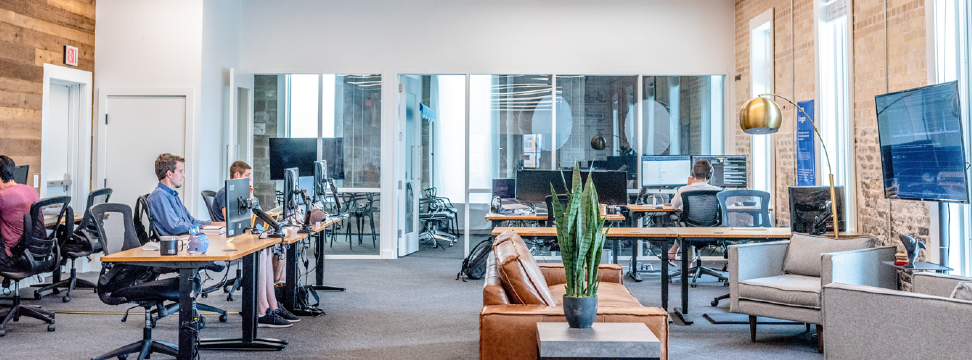Hybrid working has impacted the office market in a number of ways, affecting the quantum of space required by occupiers and how office space is configured to accommodate new ways of working. We’ve taken a closer look and identified the impact hybrid working has had on spatial requirements in the Greater London & South East (excluding central London) office market.
The initial headline statistic from the data we have analysed is that there has been a 16 per cent reduction in total space occupied, looking at the change in the quantum of space occupied at transactions over 10,000 sq ft from the start of 2021 to Q3 2022. However, this doesn’t mean everyone is reducing their space. When analysing the data on a deal by deal basis, a more balanced picture is revealed with a broad split of 51 per cent of occupiers increasing or expanding their footprint and the remaining 49 per cent of transactions involving occupiers decreasing their office space.
The 16 per cent reduction in space occupied across all size bands has been skewed by large corporate organisations who have consolidated from multiple buildings or significantly reduced their footprint. A notable example is Unilever pre-letting 276,000 sq ft for a new headquarters at Eden Campus, Kingston; are consolidating from five existing sites in the South East. Three (the telecoms company) consolidated from two buildings located in Reading and Maidenhead to lease 115,000 sq ft at 450 Longwater Avenue, Green Park, Reading which was a new speculative development. It’s worth noting that this tendency where companies acquired vast quantums of space (such as during the dotcom boom) before slowly reducing their footprint over time or ‘rightsizing’ has been a trend for over 20 years.
Not all companies are downsizing though, with a combination of headcount growth and rising occupational densities resulting in companies increasing their office footprint. There have been a number of transactions where companies have expanded or set up new offices, with specific sectors growing considerably. Notably the technology sector has, on average, increased its footprint by 40 per cent this year, which is the highest proportion compared to any other business sector. Rapid 7 leased 22,616 sq ft at 2 Forbury Place, Reading where it doubled its space occupied from their previous space at Arlington Business Park, Reading. Intersystems acquired 43,000 at One Victoria Street, Windsor increasing their footprint from two separate buildings in Windsor and Eton.
Looking forward there will be continued for demand for Grade A office space as occupiers seek aspirational work environments that can attract and retain staff in the “war for talent” and support the return to the office. A consequence of the betterment of office space is that occupiers are paying higher rents. On average the rent per sq ft paid by occupiers increased by 37 per cent when compared to their previous lease after relocating in the region. There were thirteen Greater London & South East submarkets which achieved record high rents in 2021; this trend has continued in 2022 with new rental tones being set in seven submarkets. Rental growth is expected to continue on speculatively delivered prime Grade A stock despite the economic headwinds with occupiers prepared to pay premium rents to secure the best quality space.
Further information
Contact Andrew Willcock or Simon Preece
Market in Minutes: Greater London & South East Offices


(1).jpg)

.jpg)



.jpg)

